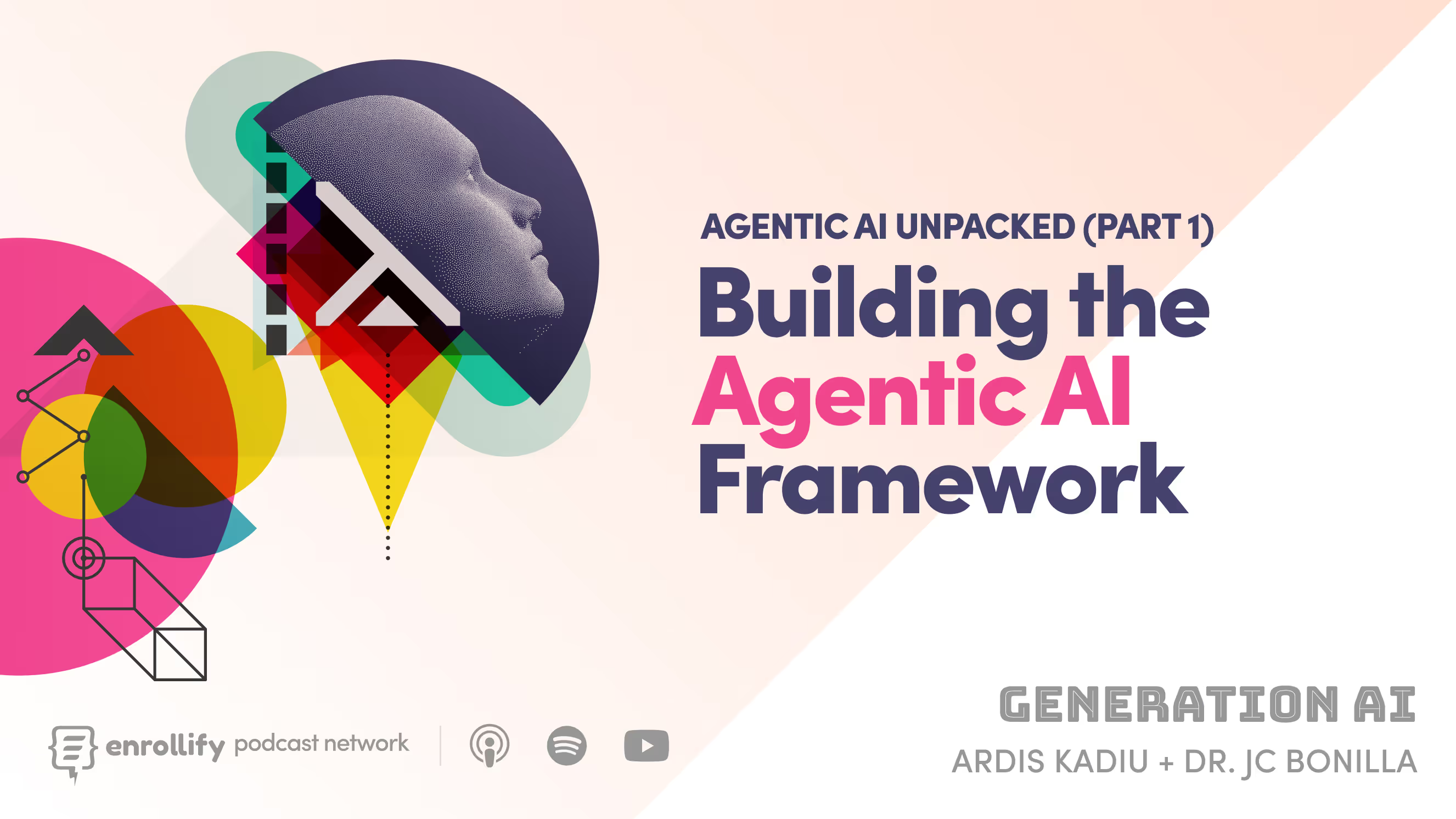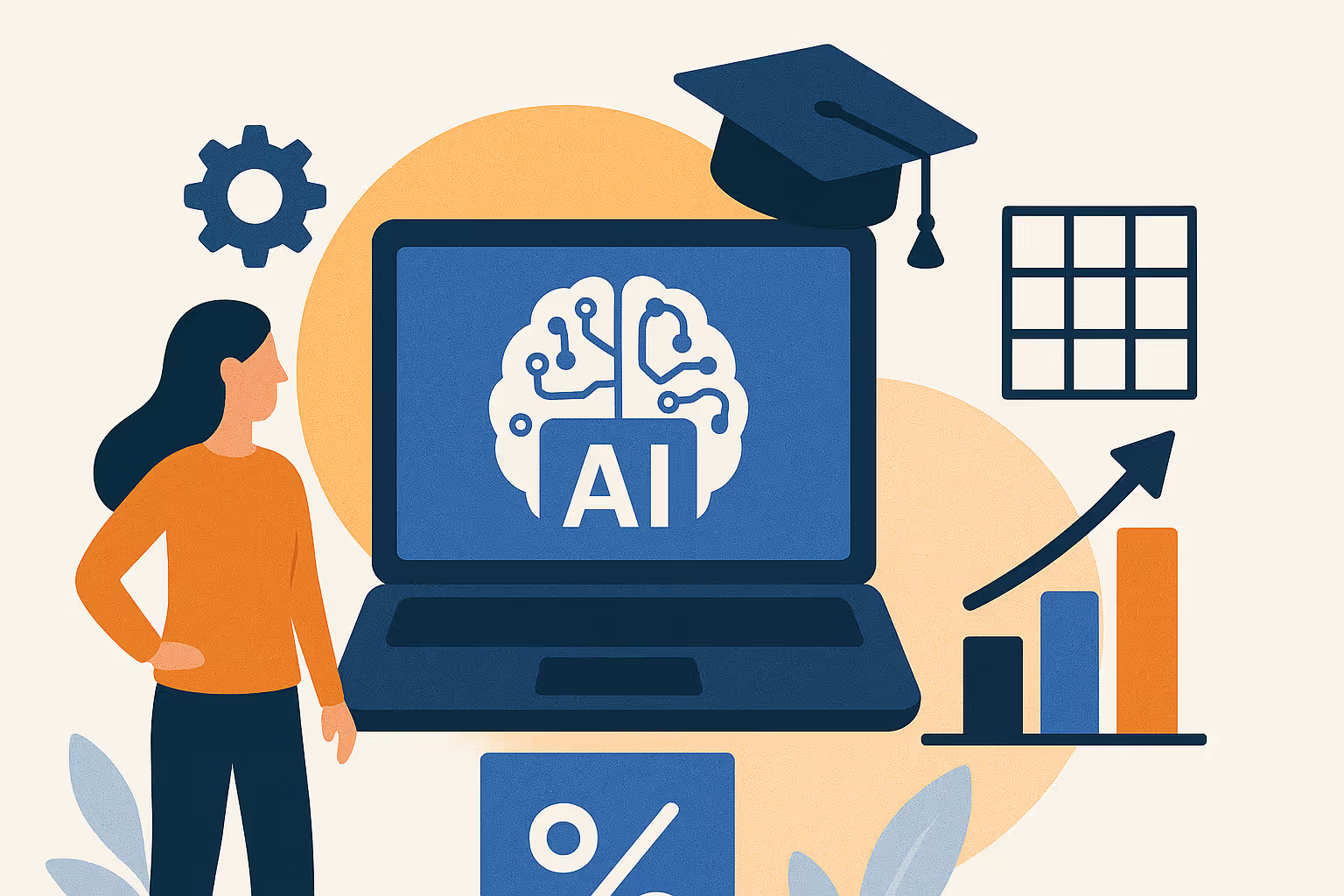About the Blog
2025 isn’t just about using AI for chatbots or basic automation. The real game-changer? Agentic AI.
In a recent episode of Generation AI, hosts JC Bonilla and Ardis Kadiu dive into one of the biggest shifts happening in AI—agentic systems. They explore why 2025 is the year of AI-powered structures, breaking down how AI agents are moving beyond simple automation to reasoning, adapting, and acting within higher education institutions.
This is the first episode of a three-part series that will help leaders understand how to integrate AI agents into their operations, optimize student engagement, and prepare for the emergence of AI workforces.
Critical Takeaways for Your Institution
- AI agents are the future of higher education operations. Institutions will be defined by those who adopt and scale AI versus those who don’t.
- Agentic AI is built on three core abilities: reasoning, adaptation, and action. Unlike traditional AI, modern agents can analyze context, learn from interactions, and execute tasks dynamically.
- Higher education needs a verticalized AI approach. Generic AI models (horizontal AI) don’t provide the contextual understanding necessary for enrollment, student success, or financial aid operations.
- The key to AI success is seamless integration. AI agents should be embedded within institutional platforms (SIS, CRM, LMS) rather than operating as standalone tools.
- Proactive and reactive AI capabilities drive efficiency. AI should not only respond to user prompts but also anticipate needs and take action.
- Guardrails and reflection loops ensure reliability. AI must be transparent, measurable, and continuously optimized for accuracy and effectiveness.
- Orchestration is critical for multi-agent collaboration. AI assistants should work together—handling different tasks, passing information seamlessly, and optimizing student interactions.
The AI Framework That Will Define 2025
What is Agentic AI and Why Does It Matter for Higher Education?
Agentic AI is the next evolution of artificial intelligence. Unlike traditional AI that responds to direct prompts, agentic AI can independently reason, adapt to new information, and act on its own. This means AI agents can not only process data but also make decisions and collaborate with human teams.For higher education institutions, this shift is massive. AI agents will move beyond simple chatbot functions and into areas like enrollment marketing, student success, financial aid, and operations—working alongside staff to optimize processes. Institutions that embrace this technology will become more efficient, while those that don’t may struggle to keep up.
What Are the Core Principles of an AI-Driven Higher Education Framework?
To successfully implement agentic AI, institutions need a structured approach. Here are the five core principles of an AI-powered framework for higher ed:
- Seamless Integration – AI should be embedded into institutional platforms (CRM, SIS, LMS) for real-time, contextual awareness.
- Human-in-the-Loop Design – AI should work transparently alongside human staff, allowing for oversight and collaboration.
- Proactive and Reactive Capabilities – AI should not only respond to prompts but also anticipate and take action on behalf of users.
- Modular and Extensible Architecture – AI should be flexible enough to support different roles, workflows, and institutional needs.
- Measurable ROI – AI adoption should drive clear improvements in enrollment, student engagement, and operational efficiency.
How Does AI Move from Concept to Practical Use in Higher Ed?
The real power of agentic AI comes from orchestration, which enables multiple AI agents to collaborate seamlessly. At Element451, for example, AI-powered assistants are designed to specialize in specific functions, such as recruitment, financial aid, and student advising. These AI agents work together, passing information back and forth to create a cohesive student experience.An AI admissions assistant might engage a prospective student, collect their interests, and pass that data to a marketing AI assistant, which then sends personalized follow-ups. Meanwhile, a financial aid assistant can proactively notify the student about available scholarships—all happening automatically and in real time.
How Can Institutions Ensure AI is Reliable and Ethical?
One of the biggest concerns about AI is accuracy and accountability. That’s why this framework includes guardrails and reflection loops, ensuring AI remains transparent, measurable, and aligned with institutional standards.
- Guardrails protect against misinformation, bias, and data security risks. AI should follow institutional policies and only provide verified responses.
- Reflection loops allow AI to learn from feedback, improving over time through human oversight and real-world interactions.
Institutions that embrace agentic AI will be the ones that optimize operations, improve student engagement, and stay ahead in an increasingly competitive landscape. By understanding the framework for AI-powered systems, universities can move beyond basic automation and into a future where AI agents collaborate with human teams to deliver seamless, scalable, and personalized experiences for students.
Listen to the full episode of Generation AI now and stay ahead of the curve.










